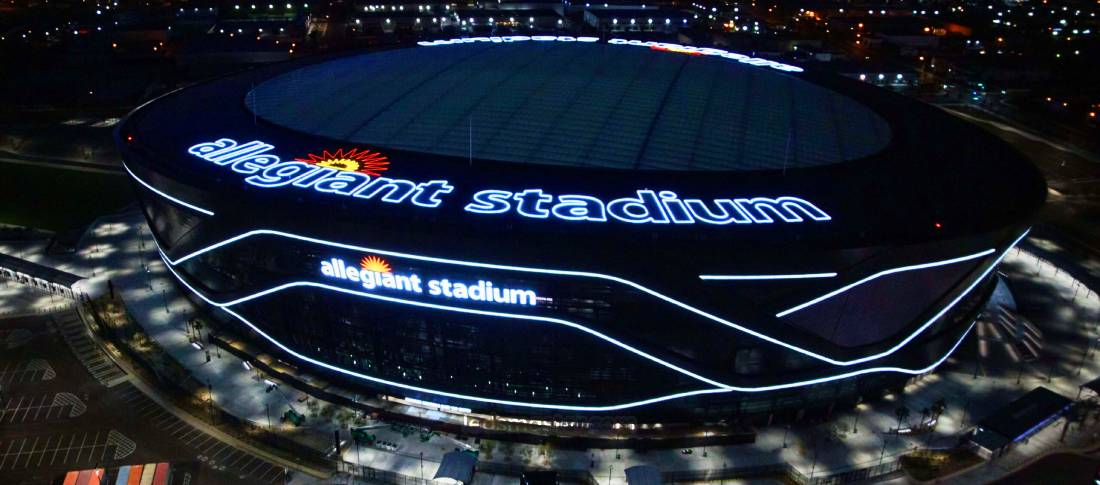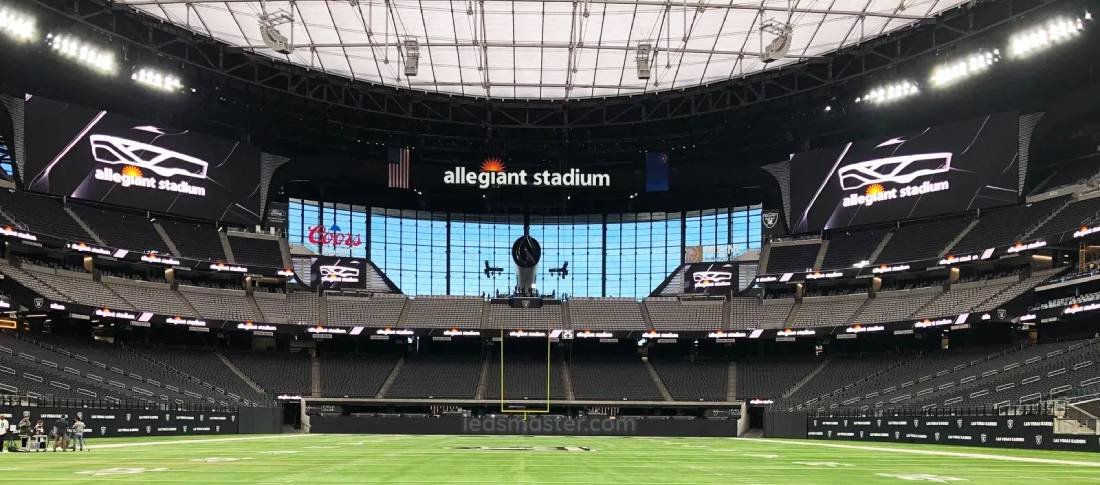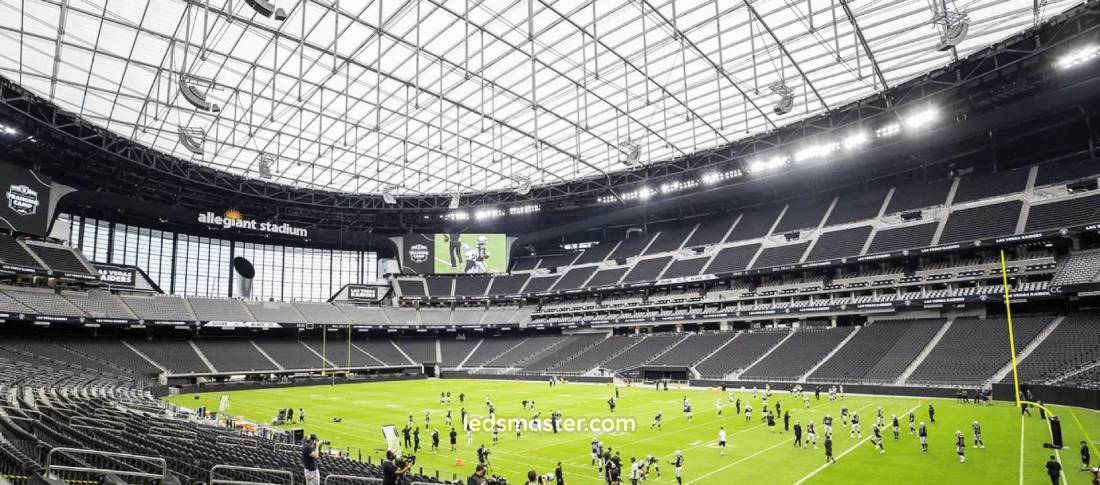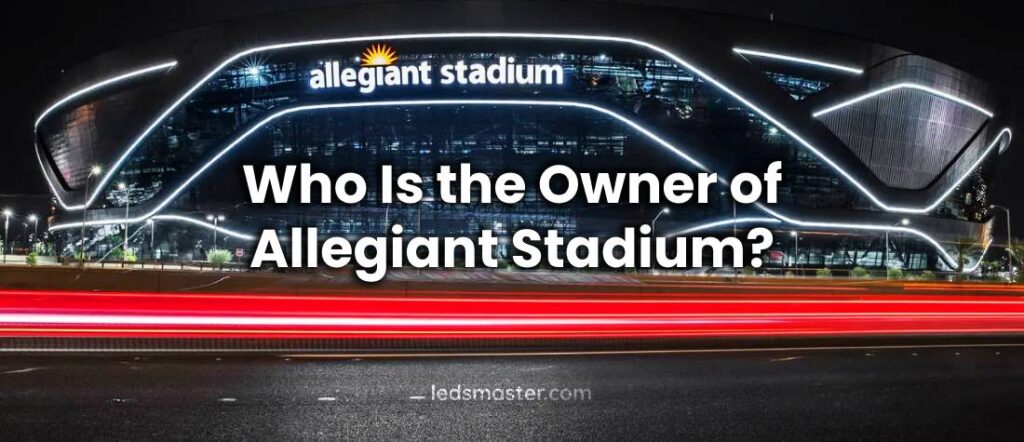Allegiant Stadium, an architectural marvel situated in Paradise, Nevada, is the home of the NFL’s Las Vegas Raiders. Since its opening in 2020, the stadium has garnered attention not only for its impressive design and cutting-edge features but also for the significant contributions of its ownership. Understanding who owns Allegiant Stadium and their role in its development provides valuable insight into the stadium’s creation and its impact on the Las Vegas community.
Table of Contents
ToggleThe Ownership of Allegiant Stadium

Allegiant Stadium is owned by a consortium of stakeholders, primarily led by the Las Vegas Raiders and the City of Las Vegas. The stadium was developed as part of a broader effort to bring a professional sports team to Las Vegas and to create a state-of-the-art facility that would serve as a centerpiece for the city’s entertainment and sports industries.
The Las Vegas Raiders
The primary entity behind Allegiant Stadium is the Las Vegas Raiders, an NFL team with a storied history and a passionate fan base. The Raiders, originally founded in 1960 and formerly based in Oakland, California, moved to Las Vegas in 2020. This relocation was a significant event for both the team and the city. Mark Davis, the team’s owner and managing partner, played a crucial role in the move and in the development of Allegiant Stadium.
Mark Davis’s vision for the stadium was to create a venue that not only met the needs of the Raiders but also became an iconic landmark for Las Vegas. His commitment to this vision was evident in every aspect of the stadium’s design and construction. Under his leadership, the Raiders secured a significant amount of funding and worked closely with architects, engineers, and construction teams to bring the project to fruition.
The City of Las Vegas
The City of Las Vegas also played a critical role in the development of Allegiant Stadium. The city, along with Clark County, provided substantial financial support for the project through public funding. This investment was part of a broader strategy to boost the local economy, enhance the city’s infrastructure, and position Las Vegas as a premier destination for major events.
The city’s involvement was instrumental in ensuring that the stadium met the highest standards and integrated seamlessly into the urban fabric of Las Vegas. The collaboration between the Raiders and city officials exemplified a shared commitment to creating a world-class facility that would benefit both the team and the community.
Contributions to the Stadium
Financial Investment
The financial investment in Allegiant Stadium reflects its ambitious vision and scale, totaling approximately $2 billion. This substantial amount underscores the project’s significance and the commitment of its stakeholders. The funding was sourced from a mix of private and public contributions. The Las Vegas Raiders, led by owner Mark Davis, were instrumental in financing a major portion of the stadium. Their investment was not merely a financial contribution but a strategic decision to secure the team’s future and success in Las Vegas. This investment also aligns with the Raiders’ long-term objectives, including maximizing their commercial and fan engagement opportunities in a new market.
Public funding played a crucial role in the development, provided by the City of Las Vegas and Clark County. This public investment aimed to generate substantial economic benefits for the community. By funding a portion of the stadium’s construction, the city sought to create a catalyst for local economic growth, including job creation, increased tourism, and enhanced revenues for businesses in the surrounding area. The collaboration between private and public sectors highlights the shared commitment to leveraging the stadium’s potential to boost the regional economy and provide lasting benefits to the community.
Design and Architecture
The design of Allegiant Stadium is a hallmark of modern architectural and engineering excellence. Designed by the renowned firm MANICA Architecture, the stadium reflects cutting-edge innovations tailored to enhance both functionality and aesthetic appeal. The design process was characterized by rigorous planning and collaboration to achieve the highest standards of performance and sustainability.
One of the stadium’s most distinctive features is its sleek, black exterior, which embodies the Raiders’ team colors and stands out as a bold architectural statement. The incorporation of a translucent roof and expansive glass walls allows natural light to flood the interior, contributing to a vibrant fan experience. The design not only prioritizes visual impact but also integrates advanced technologies to ensure optimal lighting and broadcasting conditions. This thoughtful approach to design ensures that Allegiant Stadium meets the needs of modern sports and entertainment events while remaining an iconic landmark in Las Vegas.
Lighting and Technology
Lighting is a key element of Allegiant Stadium’s design, playing a pivotal role in both its visual appeal and operational functionality. The stadium boasts a sophisticated lighting system featuring energy-efficient LED fixtures. These LEDs provide bright illumination and enhance the venue’s visual impact, creating an immersive and dynamic atmosphere for attendees.
The versatility of LED technology allows for various lighting effects, including color changes and dynamic displays that can be customized for different events. This flexibility is essential for a multi-purpose venue like Allegiant Stadium, which hosts a diverse range of events from NFL games to concerts. The ability to tailor lighting to specific needs enhances the fan experience and supports the stadium’s role as a premier entertainment destination.
Externally, the stadium’s LED lighting contributes to its striking presence in the Las Vegas skyline. The carefully designed lighting highlights the stadium’s sleek exterior, making it a focal point in the city’s architectural landscape. This illumination not only enhances the stadium’s iconic status but also reinforces its role as a landmark that attracts attention and admiration.

Designing the Stadium
Concept and Vision
The design of Allegiant Stadium was guided by a clear vision: to create a state-of-the-art facility that would serve as a premier venue for sports and entertainment while reflecting the unique character of Las Vegas. This vision was realized through a collaborative process involving the Raiders, city officials, architects, and engineers.
The design team focused on creating a stadium that would provide an exceptional fan experience, with features such as comfortable seating, excellent sightlines, and modern amenities. The use of high-quality materials and advanced construction techniques ensured that the stadium would be both durable and visually striking.
Sustainable Design
Sustainability was a key consideration in the design of Allegiant Stadium. The stadium incorporates a range of environmentally friendly features, including energy-efficient lighting, water-saving systems, and sustainable materials. These measures not only reduce the stadium’s environmental footprint but also contribute to its long-term operational efficiency.
The use of LED lighting throughout the stadium is a prime example of this commitment to sustainability. LED lights are known for their energy efficiency and long lifespan, making them an ideal choice for large-scale venues. In addition to their environmental benefits, LED lights help to reduce maintenance costs and improve the overall lighting quality.
Fan Experience
Enhancing the fan experience was a central focus of the stadium’s design. The stadium features a variety of amenities, including premium seating options, luxury suites, and a range of food and beverage choices. The design also incorporates advanced technology, such as high-definition video screens and state-of-the-art sound systems, to ensure that fans enjoy a memorable experience at every event.
The lighting design plays a crucial role in creating the desired atmosphere within the stadium. The ability to adjust lighting levels and colors allows for a customizable experience that can be tailored to different events and audience preferences. This flexibility helps to create an engaging and dynamic environment, enhancing the overall enjoyment of the event.

Economic Impact and Community Benefits
Job Creation and Economic Growth
The construction and operation of Allegiant Stadium have had a profound impact on the local economy of Las Vegas. The stadium’s development was a massive undertaking that created thousands of construction jobs, contributing significantly to the regional employment market during its construction phase. This employment surge included a range of positions, from construction workers and engineers to architects and project managers.
Once operational, Allegiant Stadium continued to drive economic growth by generating ongoing employment opportunities. The stadium employs a substantial number of staff for its day-to-day operations, including roles in facility management, security, catering, and event coordination. These jobs not only support individuals and families but also bolster local businesses that supply goods and services to the stadium.
The stadium has also become a catalyst for increased tourism and spending in the Las Vegas area. As a major venue for NFL games, concerts, and other high-profile events, Allegiant Stadium attracts visitors from across the country and around the world. This influx of visitors benefits local hotels, restaurants, and retail establishments, contributing to the broader economic vitality of the region. The increased foot traffic and tourism have had a ripple effect, spurring further investments and development in the surrounding area.
Community Engagement
Allegiant Stadium’s ownership and management have demonstrated a strong commitment to community engagement and support. The Las Vegas Raiders and city officials have leveraged the stadium as a platform to benefit the local community beyond its primary role as a sports and entertainment venue.
The Raiders organization has been actively involved in various community initiatives, including youth programs, charitable events, and local partnerships. For instance, the team has supported local schools and non-profit organizations through donations, sponsorships, and volunteer efforts. These initiatives aim to enhance educational opportunities, promote community well-being, and address pressing social issues.
Additionally, Allegiant Stadium has hosted events that directly benefit the community, such as charity fundraisers, community outreach programs, and public events. By opening its doors to local organizations and causes, the stadium serves as a valuable community asset that fosters a sense of connection and support within the Las Vegas area.
Impacts After the Renovation
Seating and Comfort Enhancements
In the wake of its recent renovation, Allegiant Stadium has significantly improved fan comfort through a comprehensive overhaul of its seating arrangements. The updated seating now includes advanced cushioning and ergonomic designs, which contribute to a more comfortable experience for attendees during long events. The renovation has also introduced an array of premium seating options, such as luxury suites and upgraded club seats, offering an exclusive and elevated experience for high-profile guests. These enhancements not only prioritize individual comfort but also aim to provide a more enjoyable and personalized experience for fans, demonstrating a clear commitment to enhancing overall event enjoyment and satisfaction.
Technological Advancements
Technological upgrades have been a central focus of Allegiant Stadium’s renovation, enhancing both the visual and auditory experiences for fans. The stadium now features larger, high-definition video screens that provide clearer, more vibrant images, significantly improving the viewing experience. Alongside this, the installation of advanced audio systems ensures superior sound quality, delivering an immersive auditory experience that complements the visual enhancements. Furthermore, the renovation has improved Wi-Fi and mobile connectivity, providing faster internet speeds and enabling better engagement through interactive digital platforms. These technological advancements are designed to keep fans connected and engaged, facilitating a more interactive and immersive experience throughout their visit.
Concessions and Hospitality Upgrades
The renovation of Allegiant Stadium has also led to notable improvements in its concessions and hospitality areas. A broader range of high-quality food and beverage options has been introduced, catering to a diverse array of tastes and dietary preferences. The redesign of concession stands and hospitality zones includes modern décor and more efficient service areas, aiming to enhance the overall dining experience. These upgrades reflect a commitment to improving guest satisfaction by offering a more enjoyable and convenient food and beverage experience, contributing to the overall positive atmosphere of the stadium during events.
Sustainability and Environmental Considerations
Sustainability has been a key focus in the renovation of Allegiant Stadium, with significant upgrades aimed at reducing its environmental impact. The stadium now features energy-efficient systems, including state-of-the-art LED lighting and advanced HVAC systems, which collectively contribute to a lower carbon footprint. Water-saving fixtures have been installed, and waste management practices have been enhanced to further the stadium’s commitment to environmental stewardship. These measures reflect a broader initiative to minimize the stadium’s ecological footprint while promoting sustainable practices, aligning with modern standards of environmental responsibility.
Accessibility and Safety Improvements
Addressing accessibility and safety concerns has been a critical aspect of the renovation. Allegiant Stadium now offers improved accessibility features, including more inclusive seating arrangements and enhanced pathways for guests with disabilities. The renovation also incorporates advanced security screening technologies and upgraded emergency response systems, designed to ensure a safe and secure environment for all visitors. These improvements underscore a commitment to creating a venue that is both welcoming and safe, enhancing the overall experience for everyone attending events at the stadium.
The Technology in Allegiant Stadium
Advanced Lighting Systems
The technological features of Allegiant Stadium are a key component of its appeal and functionality. One of the most notable aspects is its advanced lighting systems. The stadium employs a sophisticated array of LED lights designed to provide bright, energy-efficient illumination. These LED fixtures not only enhance the visibility of the stadium’s interior but also contribute to its striking visual appeal.
The lighting system is highly flexible, allowing for a range of dynamic effects that can be customized for different events. For example, during NFL games, the lighting can be adjusted to highlight the field and create an intense atmosphere. For concerts or other performances, the lighting can be tailored to create elaborate light shows and enhance the overall experience for attendees. This versatility ensures that the stadium can adapt to various types of events while maintaining a high level of visual impact.
Integration with Smart Technologies
Beyond lighting, Allegiant Stadium incorporates a variety of smart technologies designed to optimize operations and improve the fan experience. The stadium features an advanced building management system that integrates various aspects of the facility’s infrastructure, including lighting, HVAC (heating, ventilation, and air conditioning), and security systems.
This integration allows for real-time monitoring and control of the stadium’s systems, enabling efficient management of resources and quick response to any issues that may arise. For example, the smart lighting system can be programmed to adjust automatically based on the time of day or the specific requirements of an event, contributing to energy savings and operational efficiency.
Additionally, the stadium’s high-tech amenities extend to its digital infrastructure. Fans benefit from high-speed Wi-Fi, mobile app features, and interactive digital displays throughout the venue. These technologies enhance the overall fan experience, providing access to real-time information, interactive content, and seamless connectivity.
Enhancing the Fan Experience
The integration of technology at Allegiant Stadium is geared towards creating a memorable and enjoyable experience for visitors. From the advanced lighting systems that set the mood for each event to the smart technologies that streamline operations, every aspect of the stadium is designed with the fan in mind.
The use of high-definition video screens and state-of-the-art sound systems further enhances the experience, ensuring that fans have a clear view of the action and enjoy high-quality audio throughout their visit. The combination of these technological features not only improves the comfort and convenience of the stadium but also helps to position Allegiant Stadium as a leading venue in the sports and entertainment industry.
Conclusion
Allegiant Stadium exemplifies a fusion of architectural sophistication and cutting-edge technology, cementing its role as a cornerstone of the Las Vegas sports and entertainment landscape. Through the collaborative efforts of the Las Vegas Raiders and the City of Las Vegas, the stadium has become more than just a venue; it is a vibrant hub that drives economic growth, fosters community engagement, and delivers an unparalleled fan experience. The incorporation of advanced lighting systems and smart technologies not only enhances the stadium’s functionality but also ensures a memorable experience for every visitor. As Allegiant Stadium continues to evolve, it remains a shining example of how modern sports facilities can blend innovation with community spirit, solidifying its position as an iconic symbol in the heart of Las Vegas.

